
It is common knowledge that breastfeeding babies is a lot easier than having to express breast milk into a bottle for them to feed from.
However, as a nursing mom, there are some instances that may require you to express your milk into a bottle before your child is fed.
Here are some of those instances:
i. Either you or your baby is admitted in the hospital and you both can’t be together every time the baby needs to be fed.
ii. Your baby is unable to suck properly or is premature and you still want him or her to feed.
iii. Your maternity leave is over and you need to return to work or any other commitments you may have while you enroll your baby at a crèche.
iv. You have just recently hired a baby sitter and won’t always be there whenever your baby needs to be fed.
v. Your breasts are uncomfortably full and you need to relieve yourself.
vi. You are going away for a while and your partner will be feeding your baby in your absence.
Irrespective of the reason, storing your breast milk safely should always be a top priority.
We are also well aware that storing breast milk can be a bit confusing for nursing mothers. This is why we have done extensive research on all you need to know about this aspect of motherhood.
In this article, you will learn about the kind of storage containers to use, the acceptable and safe conditions for storing your breast milk, how to thaw or warm frozen milk, and whether or not it is right to add fresh milk to previously-stored milk.
Table of Contents
How Can I Express Breast Milk Safely?
First of all, expressing breast milk simply means squeezing the milk from your breast into a storage container so that you can feed your baby later.
You can express milk with a breast pump or by using your hand. How much you express and how often you do it depends on why you need to do it.
However, you may not always have a regular flow rate. And on some occasions, it may take a while for the milk to flow.
If you notice this, then you may want to schedule expressing your breast milk to the time of the day when you feel relaxed.
Alternatively, you can look at a photo of your baby while you express your breast milk to ease the flow.
And just in case you don’t have that time of the day and you are unable to get a picture of your little one, you can also place a warm towel over your breasts and massage gently.
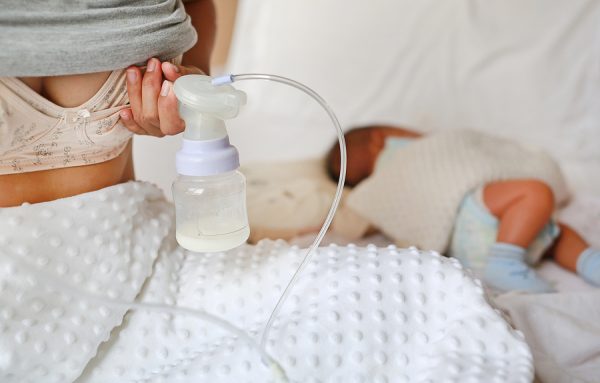
Essentials for Expressing Breast Milk
Here are some of the essentials for expressing breast milk:
i. Cover/Scarf for privacy and warmth especially in public spaces.
ii. Your baby’s picture to remind yourself why you are expressing in the first place 🙂 and then to ease let down.
iii. Breast Pump if you decide to express with a pump
iv. Breast Pads to contain a leaking breast and prevent that smell of stale breast milk from following you around town
v. Nipple Lubricant to deal with sore nipples and provide comfort while expressing
vi. Nursing Bra (hands- free) for ease and comfort especially when you are in the public
vii. Well-capped Bottles and/or
viii. Milk Storage Bags to store the milk
ix. Funnel to direct the flow into the bottle or milk bag
x. Insulated Cooler to keep the bottles and bags cool; especially when you don’t have easy access to a fridge.
xi. Cleaning Wipes (for breast pumps) to keep the pump and accessories clean and sanitized for your little one.
xii. Hand Sanitizer to clean your hands before and after expressing (source)
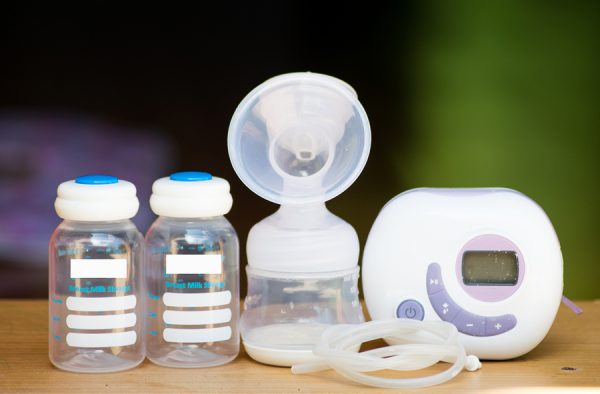
Expressing Your Breast Milk by Hand
Hand expressing seems to be a more comfortable option than expressing with a pump.
It saves the cost of having to buy or rent a pump and it also rules out having to depend on electricity supply to use an electric pump.
Hand expressing will also give you control on how to encourage milk flow from a part of your breast that may have a blocked duct.
Before you express, wash your hands thoroughly with soap and ample warm water. Then use a hand sanitizer.
Once that’s out of the way, you can follow these tips on how to express your breast milk by hand:
i. Place a sterilized bottle under your breast to collect the milk while it flows.
ii. Massage your breasts gently before you express the milk to aid easy flow, then
iii. Cup one of your breasts with your hand.
iv. With the thumb and forefinger of your other hand, make a “C” shape to close the open end of your cupped hand.
v. Squeeze lightly and keep your thumb and finger around (not on) the dark area of your nipple.
vii. Don’t squeeze your nipple or you will make it sore.
viii. Release the pressure on your breast and repeat the process in a slow rhythm.
ix. By now, your milk should have started dropping and then flowing. But if that doesn’t happen, don’t fret. Try to move your thumb and finger gently while avoiding the darker area of your breast. This should work.
x. When you notice that the flow has slowed down after a while, move your “C” fingers to another part of your breast and repeat the process.
xi. When it slows down altogether, you can move to the other breast and repeat the process on that breast. Keep switching breasts until the flow slow down or stops completely (source).
Expressing Your Breast Milk with a Pump
Breast pumps come in two types: manual breast pump and electric breast pump.
Manual breast pumps are hand-operated and a lot cheaper than the electric pumps. But electric pumps do the job faster than manual pumps.
However, these pumps suit nursing moms differently. So, it helps to find out the option that is more suitable for you by speaking to a nurse or midwife.
Irrespective of the option you eventually settle for, the following tips will be useful to you:
i. Sit up straight and lean a little forward to ensure that you are comfortable. This position will encourage milk flow.
ii. Support the breast you want to pump from underneath by placing your palm flat on your ribs. Ensure that your forefinger is between your ribs and your breast.
iii. Move your nipple slowly into the funnel of the pump and make a good fit by ensuring that your nipple is in the center of the funnel. It shouldn’t be tight. Tight funnels may make your nipple sore and prevent milk flow. There are different pump sizes to choose from so you can choose one that fits perfectly.
iv. With your nipple at the center of the funnel, keep the funnel against your breast without exerting pressure.
v. Wait for about 1 to 2 minute for the milk to flow.
vi. If you decide to use an electric pump, you can increase the suction to accelerate the flow rate. You may hurt your nipple if you start with high strength. So, start on a low strength and gradually build it up till you get a good rate (source).
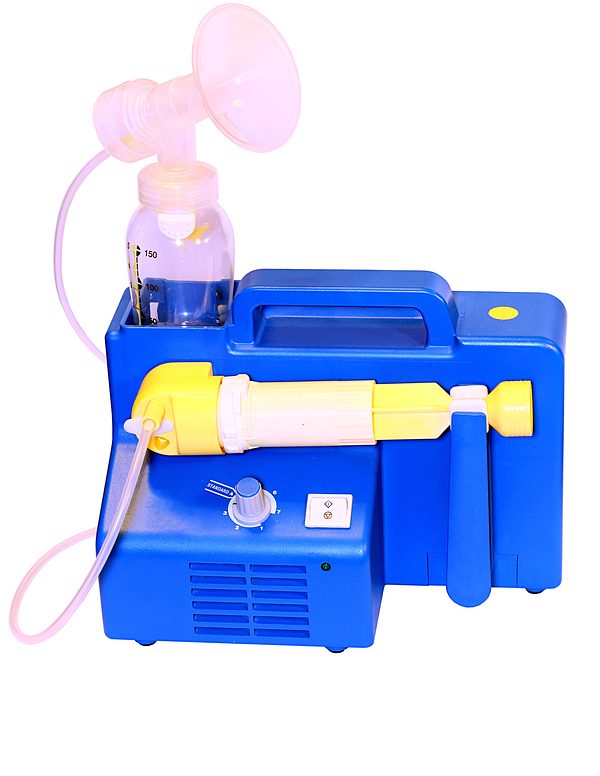
What Kind of Containers Are Suitable for Storing Breast Milk?
A general rule for selecting the right container for breast milk storage is that the containers must be well-capped and BPA-free.
That being said, here are some container types that you can possibly use for storage:
Glass Containers
Glass containers are considered the preferred option for storing frozen breast milk. This is because glass containers tend to preserve the components of the milk better than all other kinds of containers.
On the flip side, these containers are not so convenient. For one, it is easy to note that because they can chip or break, not everyone will be able to handle them properly.
In fact, some caregivers especially those at day-care centers do not accept these glass containers.
Plastic Containers
Of the plastic containers that may be suitable for storing breast milk, the clear and hard-sided plastic bottles are the safest choices.
Now, while there are different opinions on whether or not colored containers should be used for storage, some opinions suggest that there is a good chance that some of the colored dye may get into the milk over time (source).
So, you may want to play it safe by going for the clear, and certainly, hard-sided plastics.
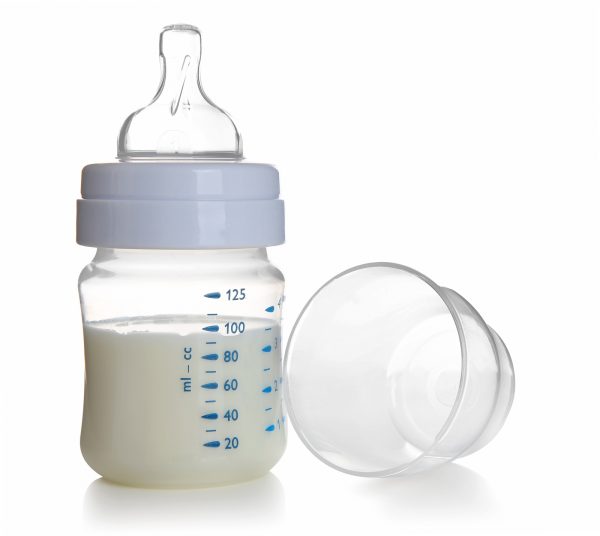
Freezer Bags Designed for Breast Milk Storage
Not all freezer bags are suitable for storing breast milk. But there are those that are designed specifically for breast milk storage. Those are the ones to look out for.
However, these bags are the most likely to leak of all the three storage choices.
Some caution also needs to be applied when you want to warm these bags in a bowl of water. If the water level rises above the seal, the warm water may get into the bag and contaminate the milk.
All that said, if you must use these specially designed freezer bags, then you will need the following safety tips:
i. If you think the bags are too thin, then you may want to double the bags before you use them.
ii. In the event that you need to store the bags in a freezer, it will be useful to place all the storage bags in a hard plastic container that has a lid.
iii. Whenever you need to warm the bags, ensure that the water level doesn’t rise above the bag’s seal to prevent the warming water from entering the bag. If you notice that while you are warming the warming water becomes cloudy, then the bag must have leaked some of its milk. In such cases, you must throw the bag and its contents away.
Irrespective of the storage container that you eventually decide on, sterilizing it before using it is an all-important task that you must include in your storage routines.Well, except the containers and bag come sterilized.
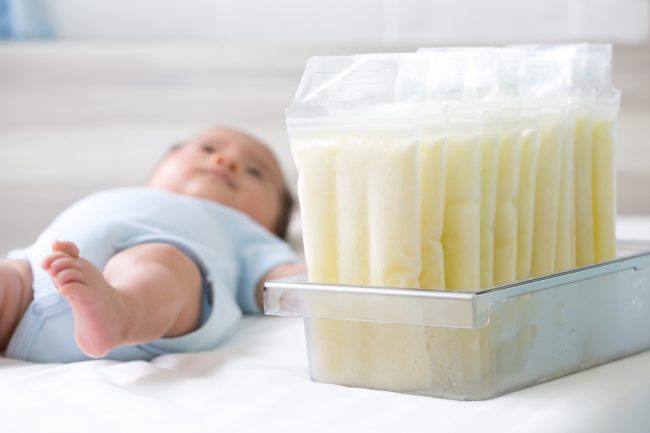
What are the Suitable Conditions for Storing Breast Milk Safely?
What determines how suitable a condition is for storing your breast milk safely is how soon you plan to use it.
For instance, if your plan is to use the milk in 2 to 3 days, then refrigerating it as opposed to freezing it will be a suitable way to store the milk. If, on the other hand, you plan to use it at a later time, then freezing will be a more suitable option.
Meanwhile, one downside of freezing breast milk is that the milk will lose some nutrients in it that help to fight infections. Nonetheless, we can tell you for free that feeding your baby with frozen milk is a lot better than formula (source).
On a general scale, breast milk can be stored safely from a few hours to some months. And that depends on the storage condition.
The following are safe conditions for breast milk storage:
Room Temperature
If the room temperature in your space is about 79 degrees Fahrenheit, then the ideal period for keeping the breast milk in that condition is about 4 to, at most, 6 hours; with 4 hours being an optimal period.
A room temperature range of 66 to 72 degrees Fahrenheit will also be suitable, provided the milk is kept under such conditions for no longer than 10 hours.
Breast milk kept in a room that has a temperature of 60 degrees will still be safe for your baby to consume for up to 24 hours after it has been expressed (source).
Insulated Coolers with Ice Packs
Insulated coolers are also suitable for storing breast milk. You only need to ensure that the cooler is filled with a generous amount of ice before you place the container of milk in it.
You can store breast milk in insulated coolers for up to 24 hours.
Refrigerator
Think you may need the milk in a few days? We recommend refrigerating the milk.
If you opt for refrigeration, then we recommend placing the bottle as far from the refrigerator door as possible.Place the bottle at the far back because temperature inconsistencies that may affect your milk are less likely to occur there.
Fresh milk may be stored in a refrigerator for a maximum of 8 days within a temperature range of 32 to 39 degrees Fahrenheit.
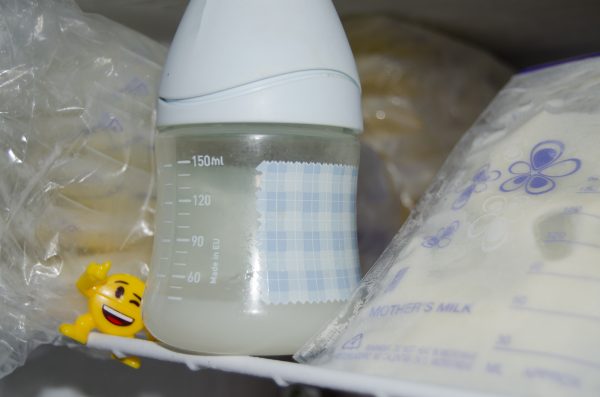
Freezer in Refrigerator-Freezer Combination
If the freezer is in a compartment inside the refrigerator, then you can store breast milk in it for a maximum of 2 weeks.
A freezer in a top or bottom freezer refrigerator unit that has its own separate door will be a safe place to store the milk for up to 4 months.
Standalone Freezer
A standalone freezer like a deep or an upright freezer is also suitable for storing breast milk and can preserve the milk for 6 months at a temperature of minus 18 degrees Celsius or even lower (source).
Check out these other articles…
Frigidaire Refrigerator Smells Like…[Solved]
Frigidaire Ice Maker Stuck [How to Fix]
Frigidaire Refrigerator Is Loud [How to Fix]
Frigidaire Refrigerator Bulb [Issues & Solutions]
Frigidaire Refrigerator Air Filter [How to]
Frigidaire Refrigerator Control [Issues and Solutions]
How Much Breast Milk is Enough to Store?
Over time, you may figure out the amount of milk that your child can take per time. However, to prevent waste, it is better to store breast milk in small portions of 2 to 4 ounces.You can then adjust whenever the need to arises.
You may also choose to store in smaller portions of 1 to 2 ounces for emergencies and/or delays in feeding.
What’s more? These smaller portions are easier to thaw, suitable as snacks for babies at any age and can be the go-to if some breast milk will be needed when you decide to introduce solids to your child (source).
We should also let you know that breast milk expands. So, it is advisable not to fill the bottles to the brim.

How Can I Thaw and Warm Breast Milk?
Thawing
Ideally, you should defrost frozen milk slowly in the refrigerator. This may take up to 12 hours. So, you may want to place the frozen milk in the fridge a night before it will be needed.
As much as you can, don’t thaw the milk at room temperature.
To hasten the thawing process, you can hold the container of frozen milk under some running water. While doing this, it is best to start with cool water. Then you can gradually increase the temperature.
You also want to be extra careful while holding a plastic bag of frozen milk under running water to prevent the water from getting into the bag.
So, what happens if you are unable to use up all the thawed milk?
In that case, you can place the remaining milk in the refrigerator and still be able to use it within 24 hours. But note that if the baby has fed from a bottle and there’s still some breast milk left in the bottle, then it is only suitable for consumption for 2 hours.
But whatever you do, never refreeze frozen breast milk that has already been thawed.
Warming
Some babies don’t mind taking cool breast milk while some others prefer it warm. If your kid prefers it warm, then you can:
i. Heat some water in a container that is slightly larger than the milk storage container, remove the warm water from the stove, and place the frozen milk into the warm water for it to warm or,
ii. Use a suitable bottle warmer (source).
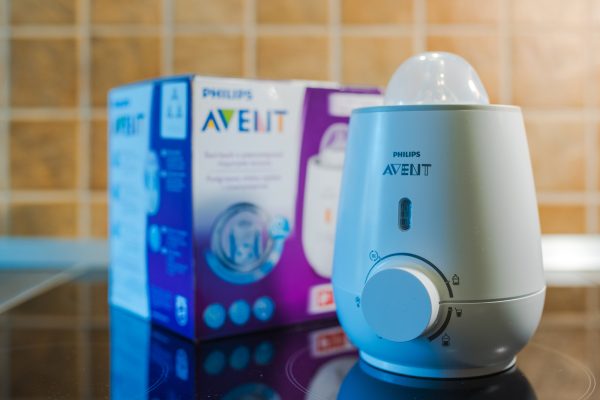
Always resist the urge to thaw or warm breast milk on a stove or in a microwave oven. This is because these heating appliances don’t heat breast milk evenly and may cause hot spots that can burn the baby’s mouth (source).
Is it Right to Add Fresh Breast Milk to Previously Stored Milk?
The difference between freshly expressed breast milk and the one that has been stored for a while is the time. So, we recommend that you label every container of breast milk with the date it was expressed. A good waterproof marker should get the job done.
If you will be enrolling your baby at a daycare center, it may also help to include your baby’s name on the bottle. That way, his or her bottles won’t get mixed up with other babies’ bottles.
Placing dates on the storage containers is important. Dates will help you know when to use up stored milk and when to send milk that has overstayed its welcome down the drain.
That said, is it okay to store fresh milk with previously-stored breast milk? Yes, it is. As long as the milk is from the same day.
More so, the fresh milk must be cooled for at least an hour before it is combined with the frozen milk. Adding warm fresh milk to frozen milk can cause it to thaw.
Meanwhile, experts don’t recommend refreezing thawed milk because doing that can cause the milk components to break down. This may also lead to a reduction in the milk’s antimicrobial properties (source).
Final Tips on How to Store Breast Milk Safely
i. Ensure that your hands are thoroughly washed before you express or handle your breast milk.
ii. Use sterilized containers only.
iii. If you won’t be using breast milk in 24 hours, then it is only safe to freeze it.
iv. Combine fresh breast milk with already frozen or cooled milk only if the fresh milk is small and cool enough to be added to the frozen quantity without thawing the frozen batch.
v. Date every batch of breast milk before you store it.

On a final note, the best time to freeze, refrigerate or chill breast milk is right after it is expressed. You can also leave fresh breast milk to sit out under room temperature conditions for up to 6 hours provided it is in a clean and well-capped container.
When in doubt about how long some milk has been in storage, take the safest route out of that confusion by tossing it.
We know that it may be difficult to throw all the hard work of expressing breast milk away. But you’ll agree with us that the safety and health of your baby is a lot more important than anything else.
Here’s a 1-minute video from Medela that summarizes everything we’ve just discussed about storing your breast milk safely:
Check out these other in-depth articles/reviews…
How Much is a Water Cooler? [Detailed Answer]
Hamilton Beach 26-Pound Ice Maker — Detailed Review
French Door Refrigerators: A Shopping Guide
Uber Appliance 9-Liter Portable Mini Fridge [In-depth Review]
Get Instant Help — Ask An Experienced Verified Appliance Technician
Need expert help? Click here to use the chat box on this page to speak with a verified appliance technician right away. No need for expensive in-home service calls. No appointments. No waiting.
Pingback: Uber Appliance 4-Liter Mini Fridge - Detailed Review - In-depth Refrigerators Reviews
Pingback: Learning the Basics: Storing breastmilk for your baby - Mummy Matters